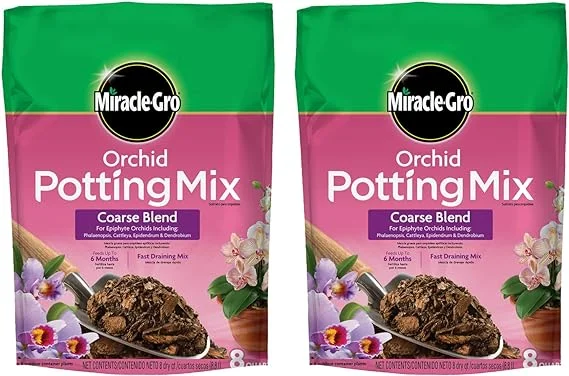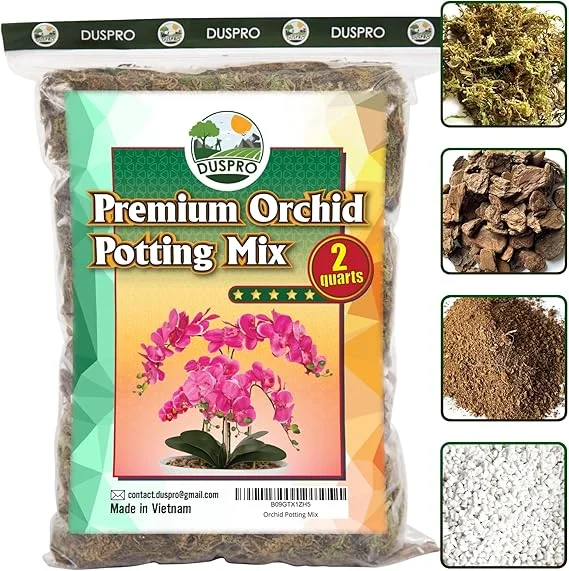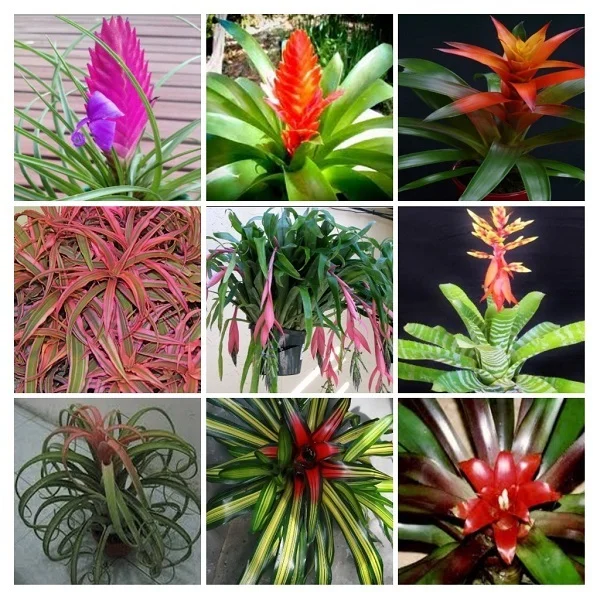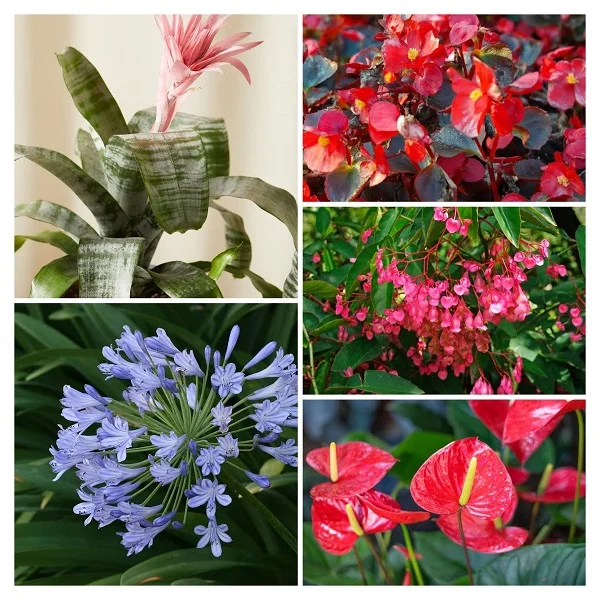Zygopetalum Orchid Indoor Care, Propagation, Growing Problems with Solutions
Some links in this post may be affiliate links
Zygopetalum Orchid grows best in bright indirect light, average warmth, humid conditions and consistently moist, rich, well-drained, orchid's soil coupled with fortnightly feeding in the growing season.
Zygopetalum Orchids are some of popular orchids on account of their colorful, fragrant, waxy, long-lasting blooms which occur in multiples in shades of green, purple, burgundy and raspberry with several patterns.
The blooms in Zygopetalum Orchids are held by tall, upright stems and will fill a room with a delightful fragrance. The leaves are glossy and strap-like. They are deeply ribbed and light-green reaching about 2 feet long. These orchids have a robust growth form and bear large, ovoid-conical pseudobulbs which are deciduous.
The genus name 'Zygopetalum' is derived from the Greek words zugon meaning "yoke" in reference to the yoke-like growth at the base of the lip (lowest flower petal).

Botanical name: Zygopetalum
Tribe: Maxillarieae
Subtribe: Zygopetalinae
Origin
Zygopetalum is a genus that occurs in humid forests at low- to mid-elevation regions of South America, with most species occuring in Brazil. Most are epiphytes but some are terrestrials.
Is Zygopetalum Orchid toxic?
Zygopetalum Orchids are non-toxic to both humans and pets. They are safe to grow indoors.
Where to Buy
If you are looking to add this spectacular orchid to your collection, you may acquire them online from Etsy (Link to Etsy).
Zygopetalum Orchid Care Indoors
Zygopetalum Orchid blooms in bright indirect light (filtered light), average warmth of 15-290C, humidity of 65-75% and consistently moist, fertile, well-drained soil coupled with regular feeding during the growing season.
Zygopetalum Orchid requires regular pruning to keep it neat as well as encourage flowering. Repotting is needed only when pot-bound or the soil completely breaks down. Keep reading for more on these growing conditions and how to achieve them.
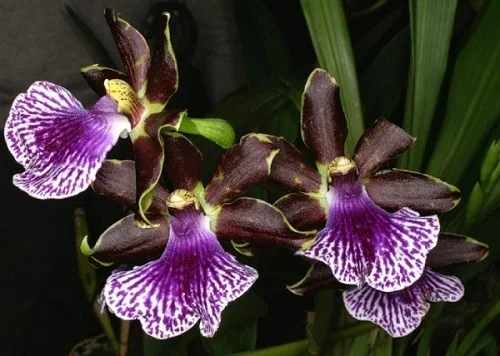
Light Requirements
Zygopetalum Orchid grows best in bright indirect light (dappled light). Keep it away from direct sunshine to avoid sun scorch on the leaves.
You may also grow Zygopetalum Orchid under grow lights if the natural lighting is inadequate. Check out these full spectrum grow lights on Amazon.
The leaves of a Zygopetalum Orchid that is receiving the correct light should be light-green. The leaves of an orchid that is too little light are dark-green while those of an orchid that is receiving too much light are yellowish.
Regularly turn the pot to ensure that the orchid gets adequate light on all sides for uniform growth as well as prevent lopsided growth.
Watering
For lush growth and regular blooms, water Zygopetalum Orchids thoroughly during the growing period and allow the soil to dry out between waterings.
Decrease watering in the cold season as growth is minimal at this time but do not let the soil dry out completely.
Use tepid, chlorine-free water as the orchid is sensitive to chlorine and other chemicals dissolved in water. Avoid wetting the foliage as it can lead to fungal diseases.
Zygopetalum Orchids like Vanda Orchids are tolerant of dry soil conditions due to the presence of pseudobulbs and their thick leaves. As such take care not to overwater the orchid as it may begin to rot.
Temperature and Humidity
The best temperatures for Zygopetalum Orchid are average warmth of 15-290C. Warmer days and cooler night temperatures with a difference of 10-150C are ideal for the orchid. Cool nights are essential to trigger flowering. Keep it away from drafts to prevent sudden changes in temperature which can result in reduced growth.
Zygopetalum Orchid requires a humidity of 65-75% to thrive. Set the pot on a wet pebble tray or use a cool mist humidifier to raise humidity. Another way to ensure that the orchid gets adequate humidity is to grow it in a well-lit bathroom or kitchen. Learn more on how to increase humidity for houseplants.
Do not mist the leaves as it can lead to fungal diseases. Occasionally clean the leaves by damp-wiping with a soft cloth. Make sure that there is good air circulation as the orchid cannot tolerate hot and stuffy conditions.
Fertilizer
Feed Zygopetalum Orchids every 2 weeks during the growing season with an orchid's fertilizer as per the manufacturer's instructions. Stop feeding in the cold season as growth is minimal at this time. Do not feed an orchid that is in flower.
It is better to err on the side of underfeeding than overfeeding as overfeeding may result in loss of roots thus death of the orchid. If you overfeed the orchid, it can also lead to vegetative growth instead of flower production.
Potting Mix
The best potting mix for Zygopetalum Orchid should be rich in organic matter, loose, free-draining bark soil to prevent it from getting soggy while providing the required nutrients. Orchid potting mixes are ideal this orchid.
Repotting
Zygopetalum Orchids bloom best when they are pot-bound. Repot only when growth begins to suffer. Repot when the orchid has outgrown its pot and the new growth reaches out over the edge of the pot or when the soil has broken down completely.
Basically repotting a Zygopetalum Orchid every 2-3 years should be adequate. Repot it only when new growth begins, shortly after blooming is over. Do not repot an orchid that is in flower as it may shorten the flowering season.
Use a pot with proper drainage holes or slits as the roots need good air circulation. The pot should be only 1 size larger than the current one. When repotting, shake off excess soil and trim off any dried and shrivelled pseudobulbs. The large orchids can be divided to propagate new plants. Take a look at these ceramic orchid pots with a free slotted orchid pot liner on Amazon.
Pruning
Pruning Zygopetalum Orchid is easy. Remove dead and diseased leaves by cutting them at the base with sharp scissors or a knife. When flowering is over, cut the flower stalk 1 inch above the 3rd node from the bottom.
Propagation
Zygopetalum Orchid propagation can be done at the beginning of the growing season once flowering is over by rhizome division.
How to propagate Zygopetalum Orchid by rhizome division
Gently split the Zygopetalum Orchid rhizome into sections while ensuring there are at least 3 shoots on each section.
Seperate the roots attached to each division from the mother orchid root-ball.
Remove the old potting soil attached to the section roots and place each section in the center of the pot.
Bury the roots of the section in the soil while ensuring that the bottom of the pseudobulb is level with the top of the soil.
The best pot for the section should be about 1-2 inches larger than the pseudobulb.
Ensure the pot has enough drainage holes and slits to prevent root-rot of the section.
Place the set up in a well-lit place until the sections have established their own roots.
Water the new Zygopetalum Orchids lightly to enhance root development. Stake each newly repotted plant.
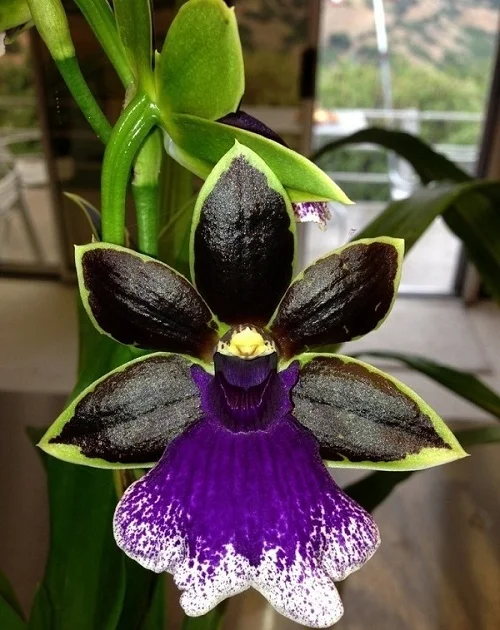
Zygopetalum Orchid Growing Problems
Zygopetalum Orchid problems include black leaf tips, lack of blooms, mold, drooping leaves, leaf spots, discolored leaves, pests and diseases among others. Keep reading for more on these problems and how to fix them.
No blooms
One possible reason why Zygopetalum Orchid is not blooming is too little light. Move the orchid to a brighter spot and ensure it is receiving bright indirect light.
Overfeeding a Zygopetalum Orchid can result in vegetative growth at the expense of flowers production. Feed the orchid once weekly with an orchid's fertilizer as per the manufacturer's instructions. Learn how to feed houseplants.
Pests
The common plant pests in Zygopetalum Orchids are mealy bugs, scale insects, slugs and snails. Isolate the affected orchid to prevent spread to other plants and treat it with neem oil as per the manufacturer's instructions.
Mold on the leaves
Mold on the leaves in Zygopetalum Orchid is an indication of powdery mildew which is prevalent in overdamp conditions coupled with poor air circulation. Do not mist the leaves as it may lead to mildew growth if the water does not evaporate quickly. Always, ensure that there is good air circulation for the orchid to minimize the occurence of the disease.
Dark-green leaves
Dark green leaves in Zygopetalum Orchid indicate that the orchid is not getting enough light. The leaves of a Zygopetalum Orchid that is receiving the correct light should be light-green. Move the orchid to a brighter spot where it will receive bright indirect light or instal a grow light if the natural lighting is inadequate. Check out this post on understanding light for houseplants.
Yellowish leaves
Yellowish leaves in Zygopetalum Orchid indicate that the orchid is receiving too much light that is very hot sunshine. Place the orchid in a more shaded spot away from direct sunshine. The leaves of a Zygopetalum Orchid that is receiving bright indirect light should be light-green.
Brown soft leaf spots
Brown soft spots in Zygopetalum Orchid leaves are an indication of a fungal disease. Remove the affected leaves immediately to prevent further spread.
Brown hard and dry leaf spots
Exposure of the Zygopetalum Orchid to direct sunshine will result in scorch marks which are brown hard and dry spots on the leaves. Move the orchid to a shadier spot or protect it from hot direct sunshine.
Limpy and drooping leaves
Limpy and drooping leaves in Zygopetalum Orchid are caused by underwatering. Do not allow the soil to dry out at all. Water the orchid thoroughly and maintain the soil consistently moist.
Leaf tips turning black and dying
The cause of black leaf tips in Zygopetalum Orchid is the presence of chemicals like chlorine and flourides in the water or accumulation of salts in the soil.
Use chlorine-free water only to water the orchid and flush out accumulated salts from the soil by running a stream of water through the soil for about 10 minutes until it comes out through the drainage holes.
You liked it? Share on social media.
Related Content
Amazon Associates Disclosure
Homeplantsguide.com is a participant in the Amazon Services LLC Associates Program, an affiliate advertising program designed to provide a means for sites to earn advertising fees by advertising and linking to amazon.com.

